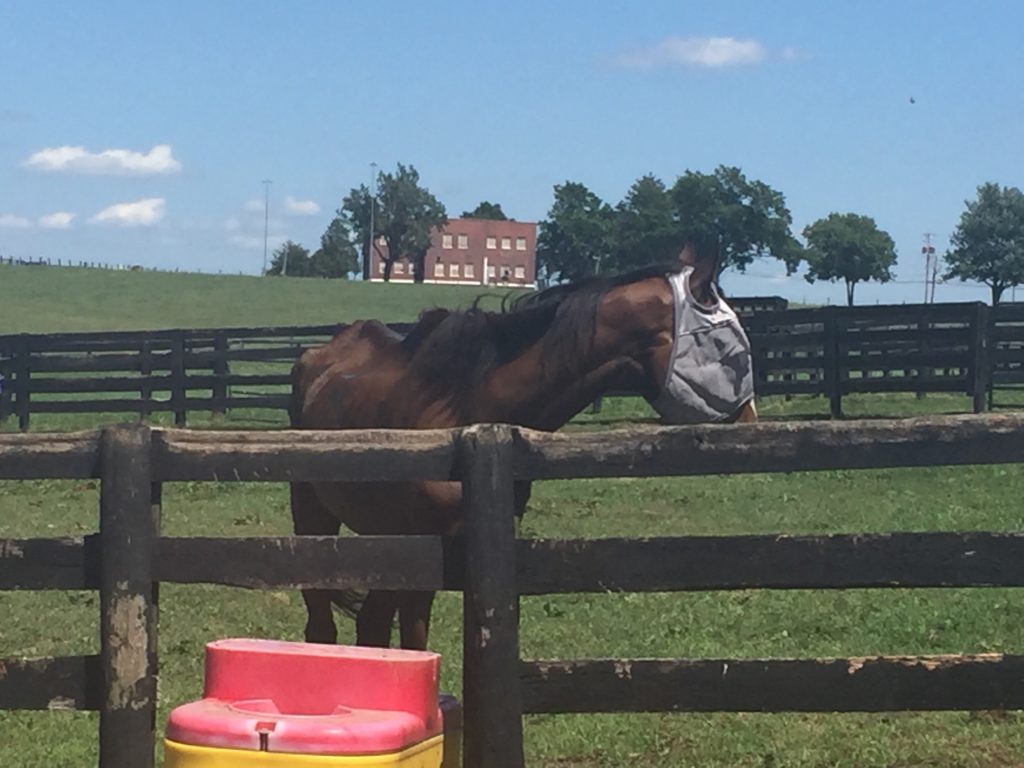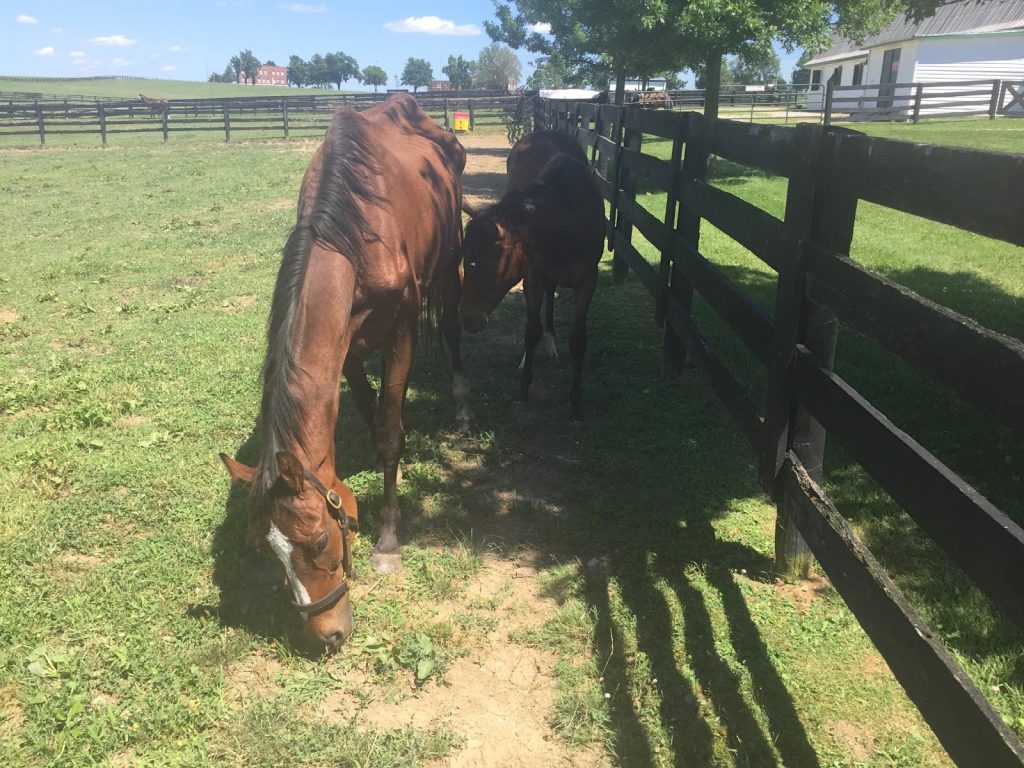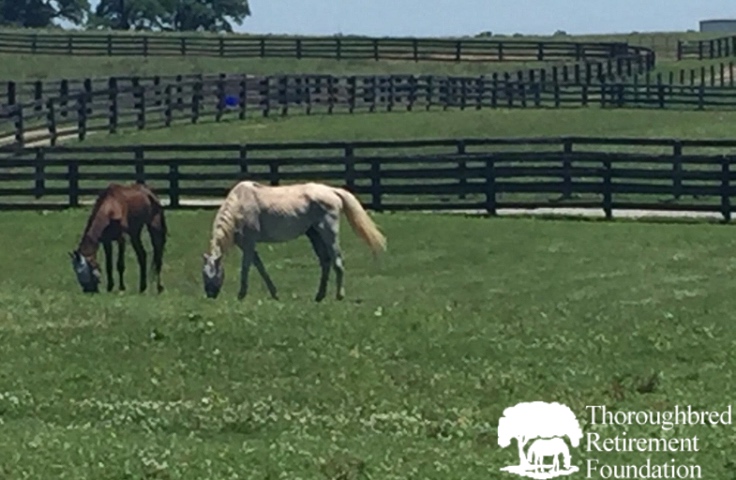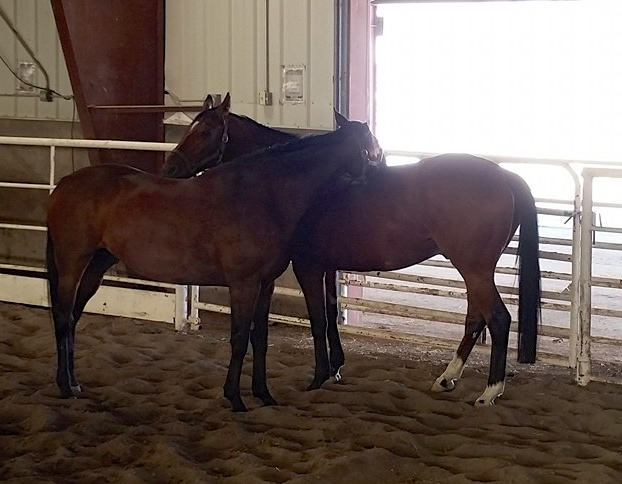
Dr. Kimberly Brokaw, DVM, rushed to Metro’s side this week to diagnose another bout with equine uveitis, the leading cause of blindness in horses.
Metro Meteor, the famous painting horse who earns his keep by creating artwork with a brush and paint, has been stricken once again with an eye condition known to be the leading cause of blindness in equines.
Six months after battling back from sudden onset blindness caused by equine uveitis, Metro began showing signs last week that the worrisome condition had returned, says owner and pet portrait artist Ron Krajewski.
This time, however, the “squinty eye” symptom Metro had this week, a sent up immediate alarm bells. And the veterinarian rushed in to diagnose and treat the condition, says Krajewski.
Race name: Metro Meteor
Sire: City Zip
Dam: Here Comes Nikki
Foal date: March 13, 2003
Earnings: $299,420“It looks like we caught it early this time, and we’re hoping the oral meds stop it from progressing,” he says, noting Metro is being treated with oral dexamethasone. “The last time, he developed the condition in both eyes, in front and back of the eyes, and it caused him to go black blind.”
At this juncture, Metro’s eyesight seems unaffected, and Krajewski is hopeful that medication will stave off the condition while plans are made for a more permanent surgical intervention. Krajewski will schedule an appointment for his 13-year-old gelding at the renowned New Bolton Center, the same hospital that cared for Kentucky Derby winner Barbaro. If all goes to plan, Metro will be scheduled for a state-of-the-art implant surgery, which will place a chip in his eyeball to provide time-released medical protection, he explains.
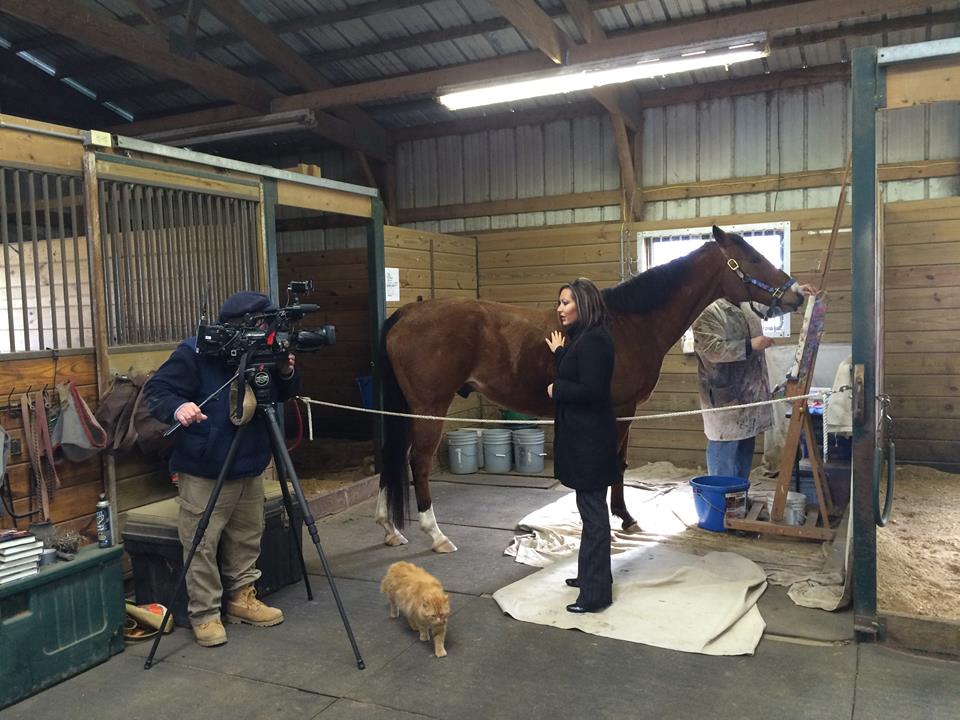
Metro Meteor has gained national celebrity status with his painting exploits. This week, however, his eye disease returned.
“Each surgery is about $1,500 an eye and the treatment lasts for 36 months,” Krajewski says. “We’ll do everything we can to protect his vision, because he did not do well with blindness when he was stricken last December.”
When the world went black, Metro panicked. He thrashed in his stall and required sedation and confinement.
Metro’s eyes have been invaluable in the Thoroughbred’s transformation from racehorse to artist. Shortly after Krajewski adopted him as a riding horse, the portrait artist got the crazy idea to teach Metro to hold a paintbrush in his teeth. From there, it didn’t take long for Metro to brush bright acrylic paint across canvas, creating abstract art and budding into a celebrity featured in mainstream press coverage, and national news programs.
In the years since he began painting in a stall “studio” alongside Krajewski, Metro has sold approximately 400 paintings. Proceeds have gone toward his medical care, which includes treatments to address significant knee problems. And, the remainder, approximately $60,000, has been donated to New Vocations Racehorse Adoption.
In earlier stories about Metro, Krajewski joked that Metro was “the most expensive free horse ever.” This week, as he and Metro faced another bout with equine uveitis, his owner was philosophical. It has been a great, wild ride with Metro, his famous horse. And no, should anything ever happen to Metro, he will not be getting another horse, he says. “My horse ownership will begin and end with Metro,” he says. “I’ll never have another horse after this.”

